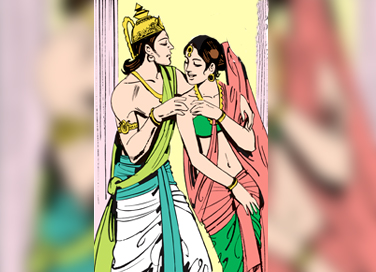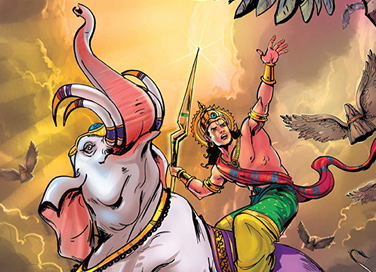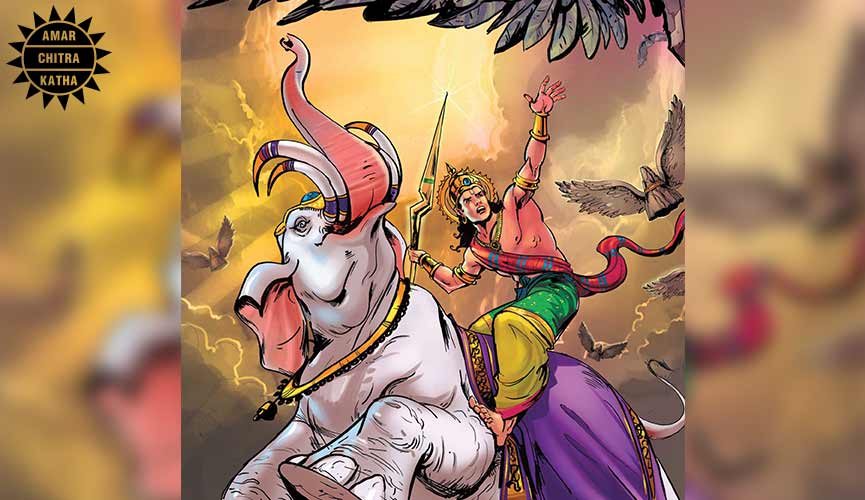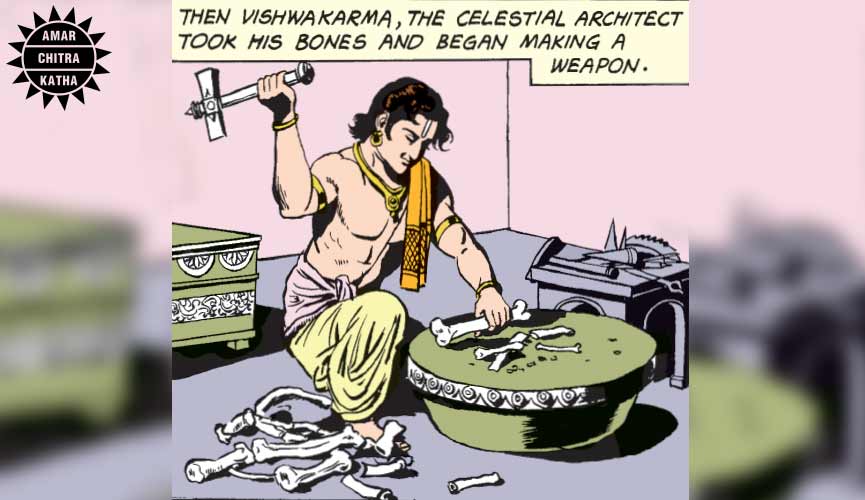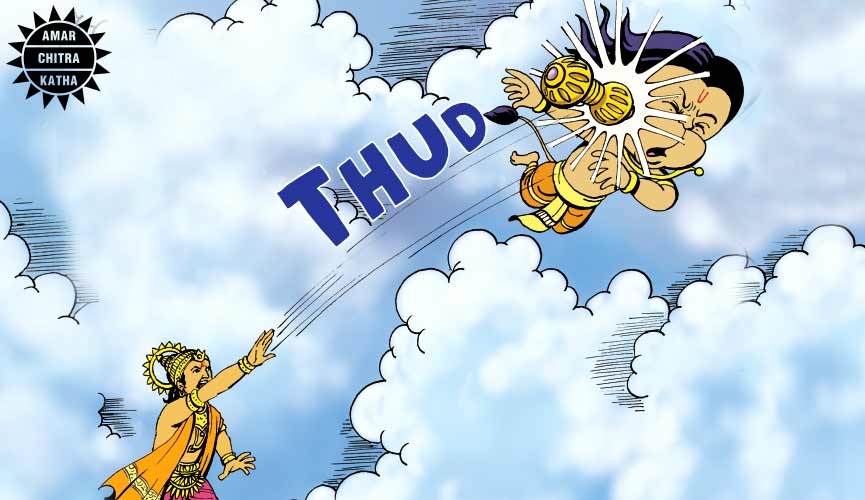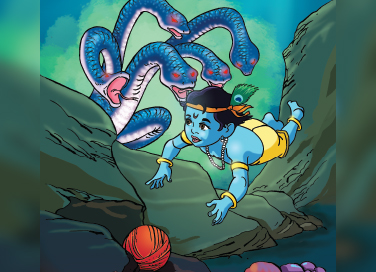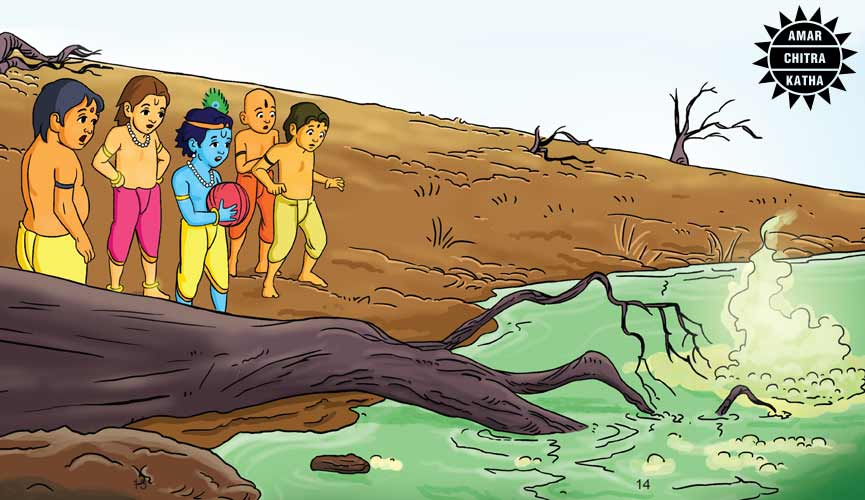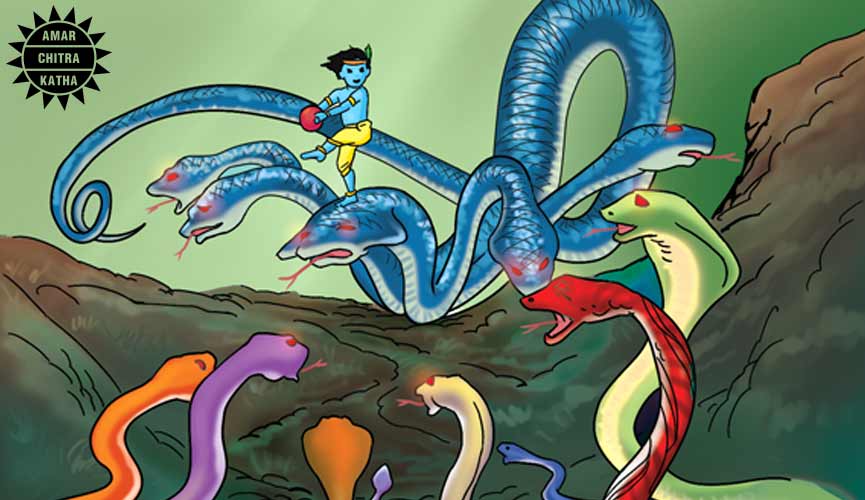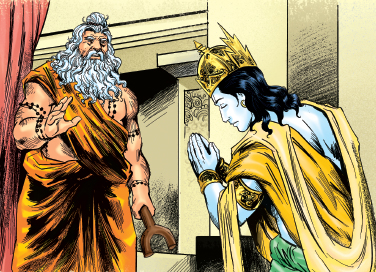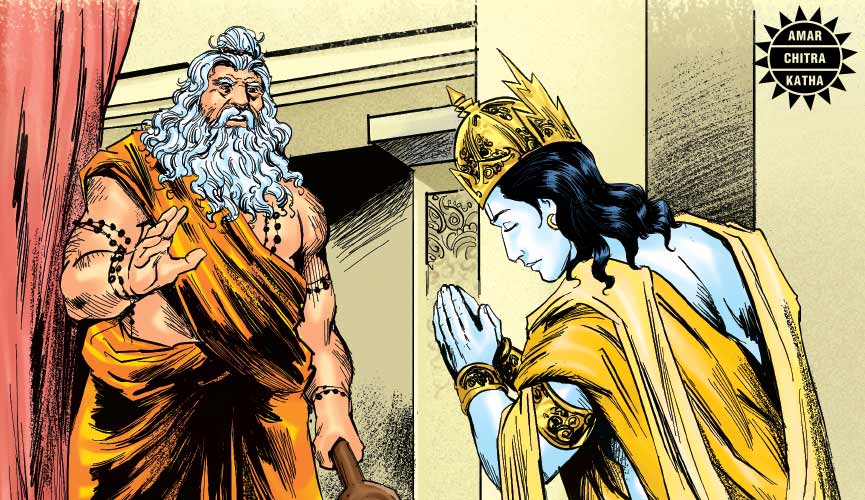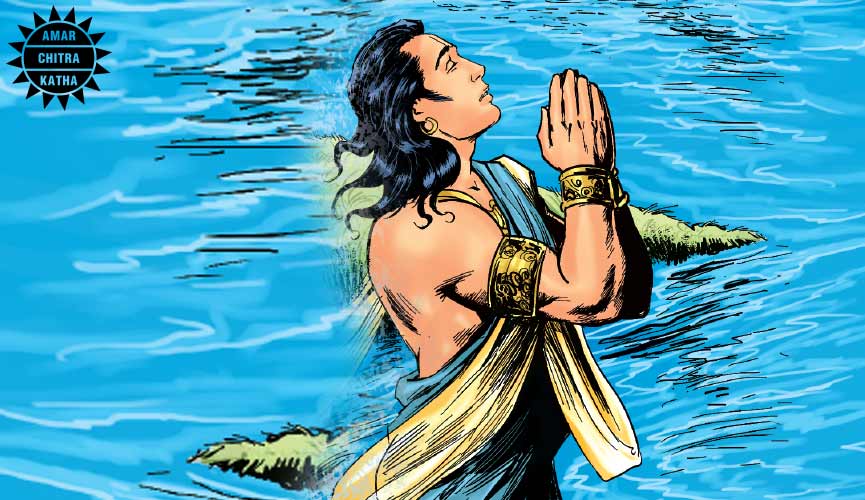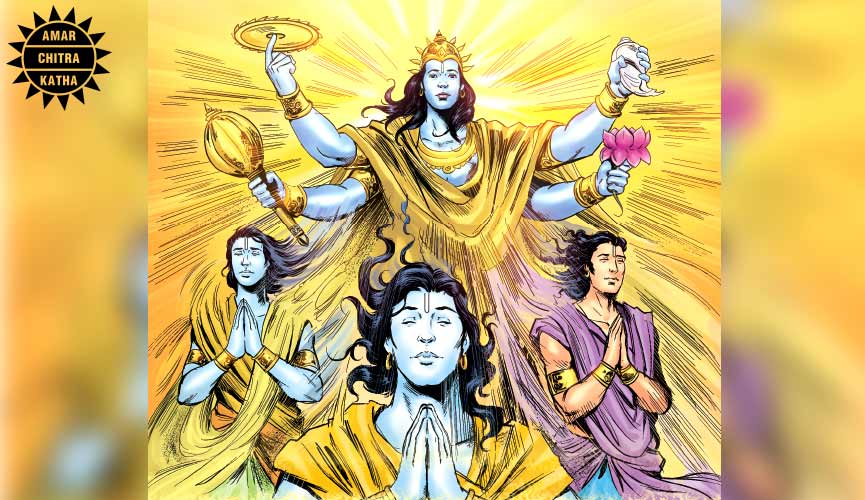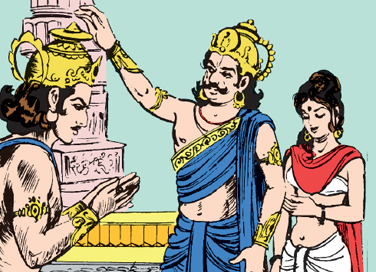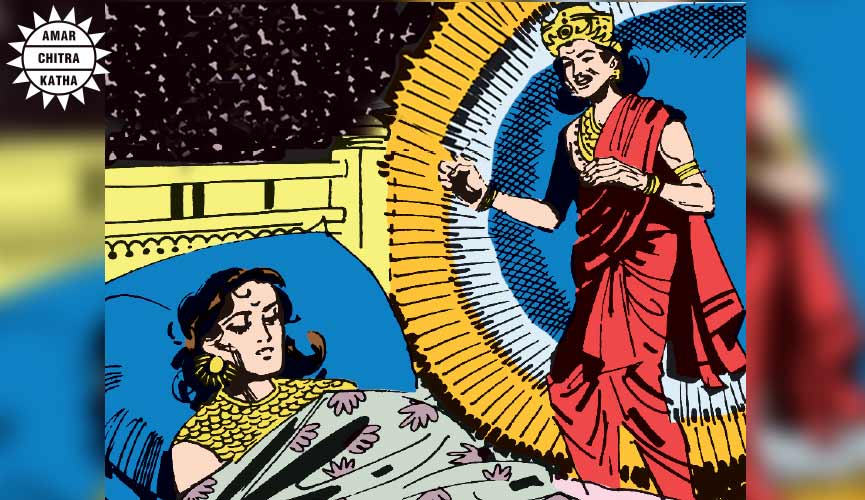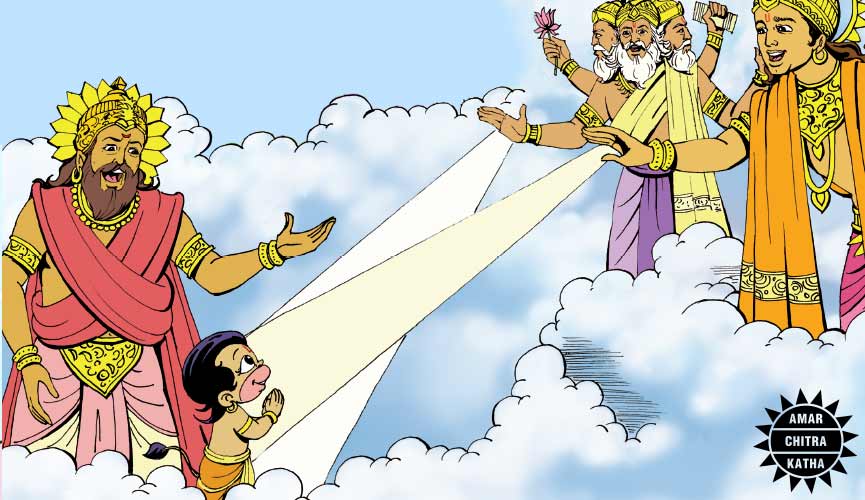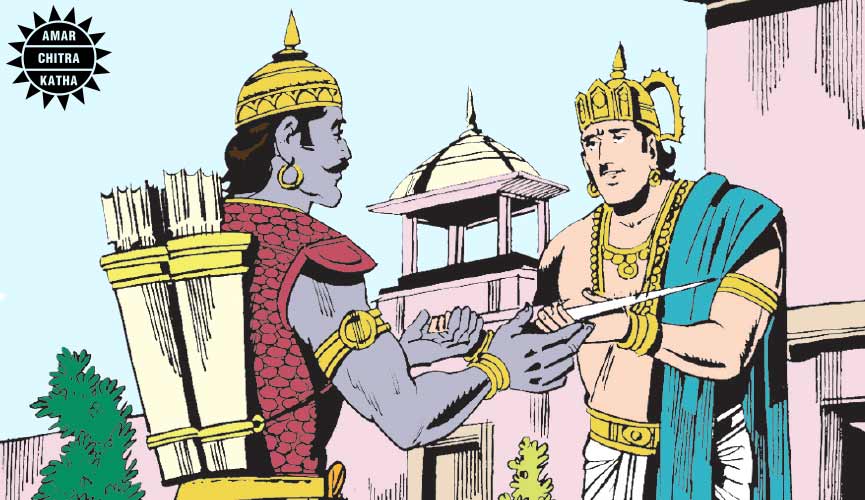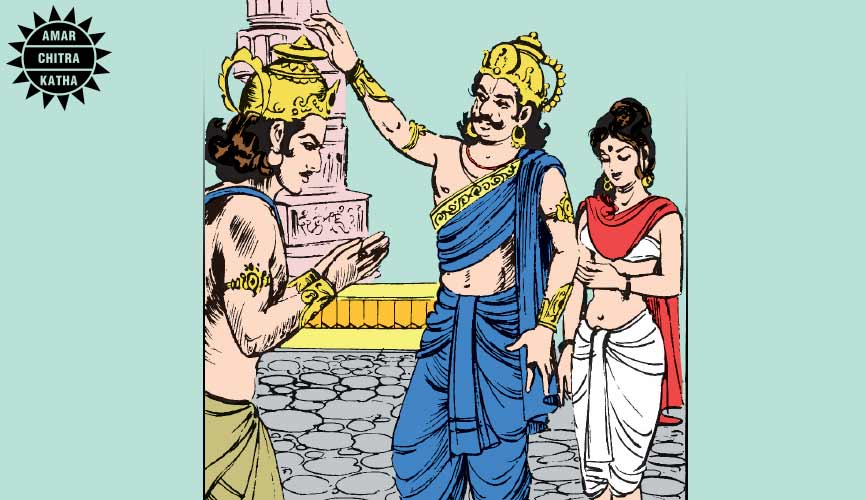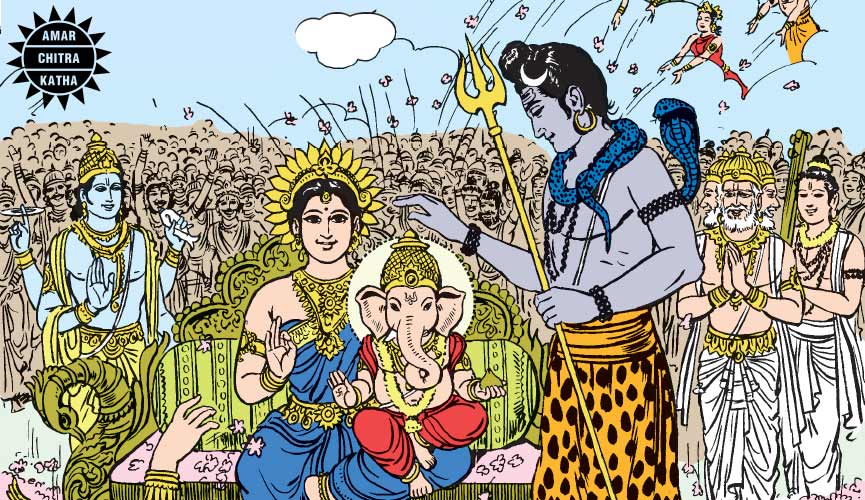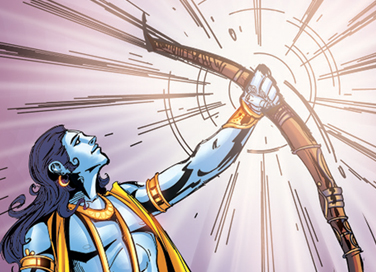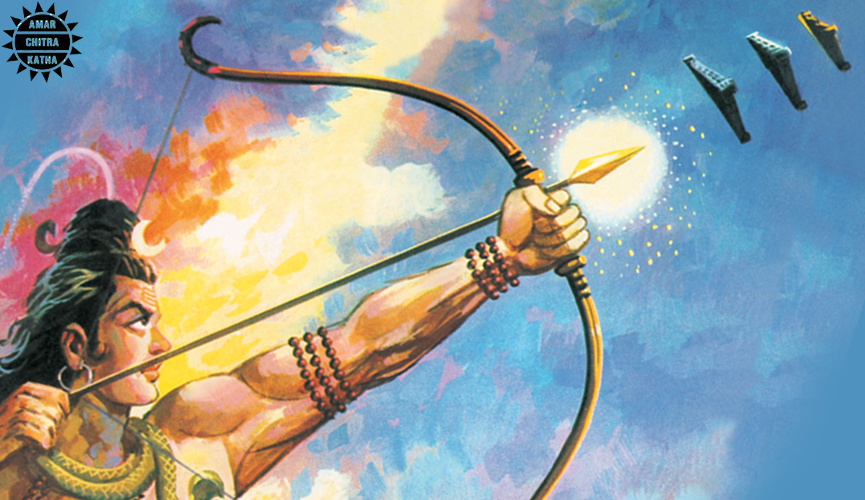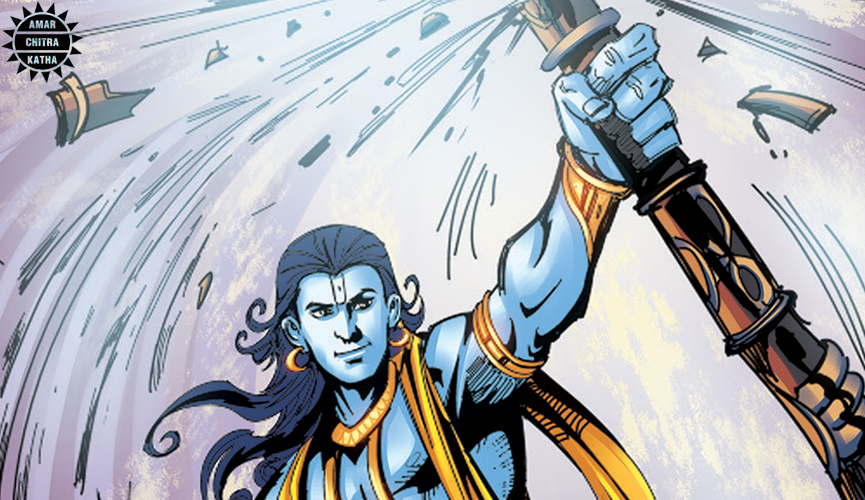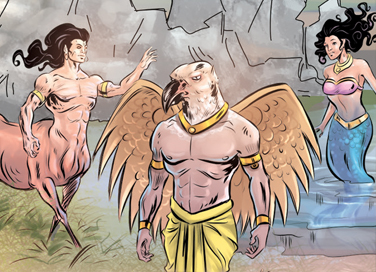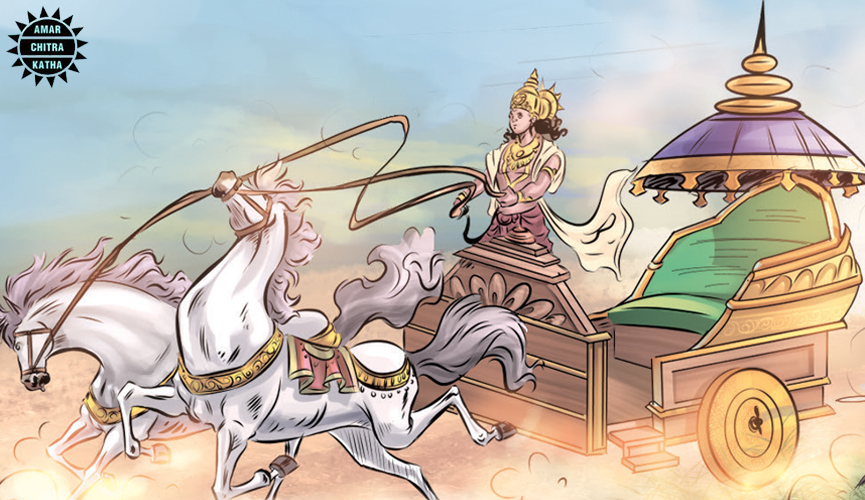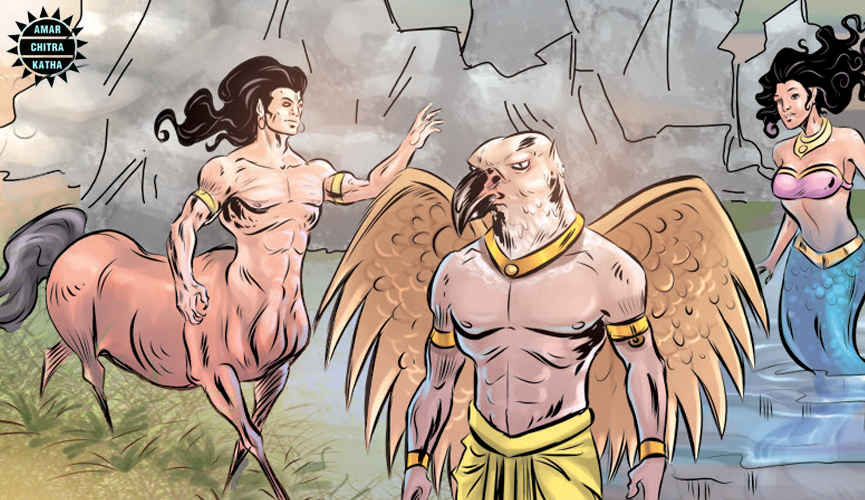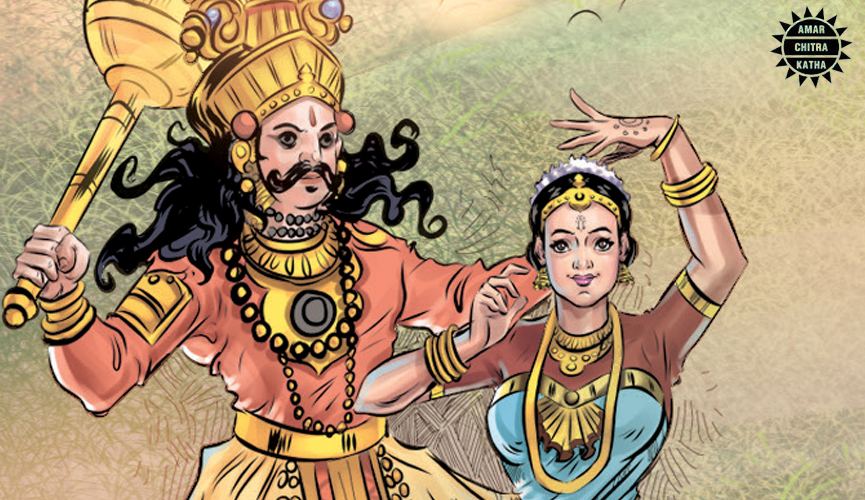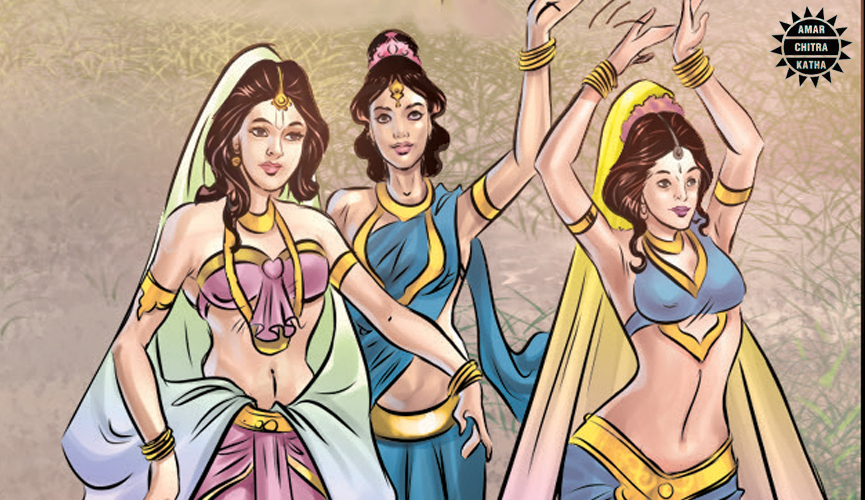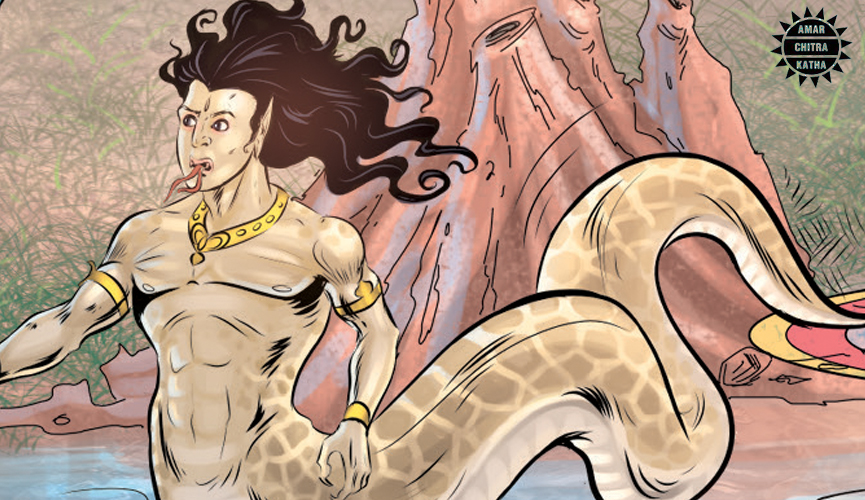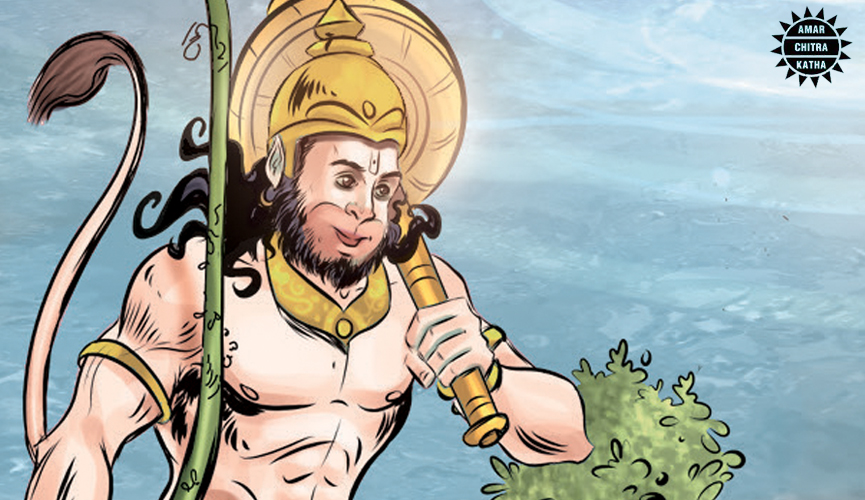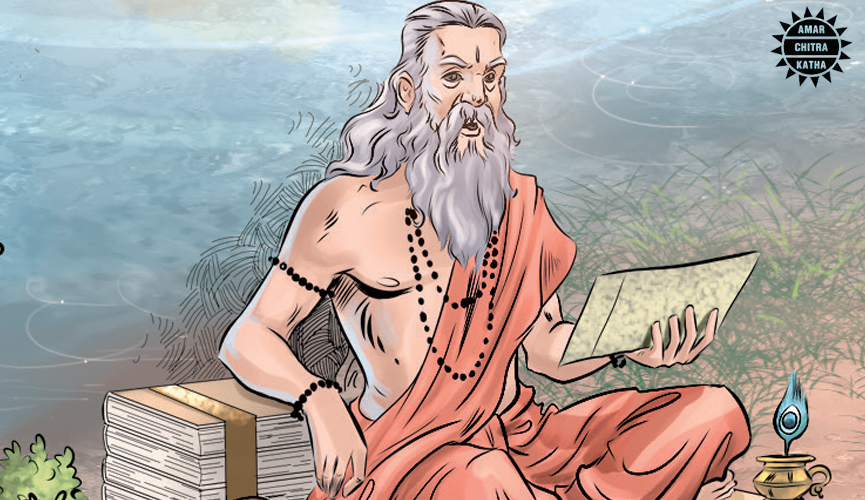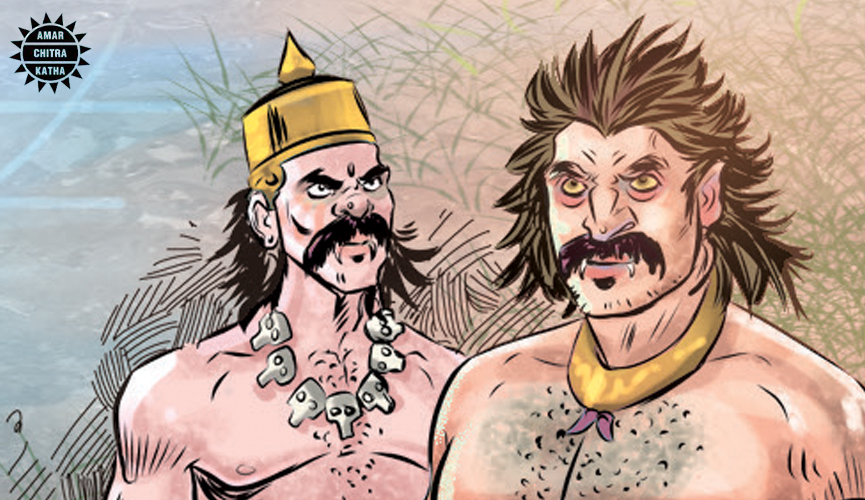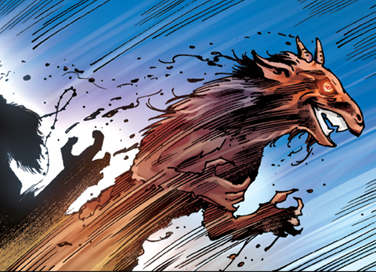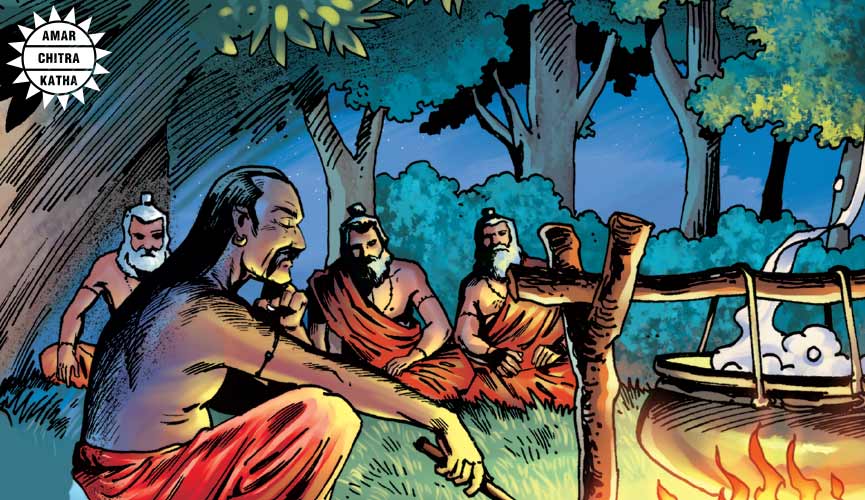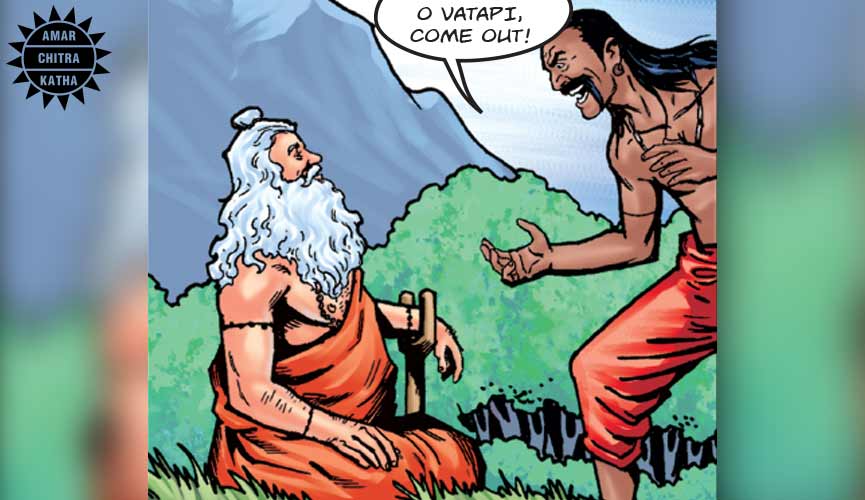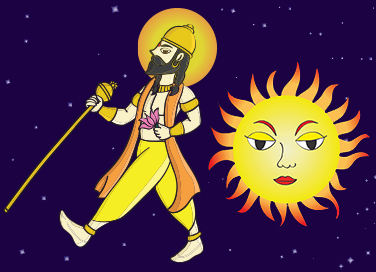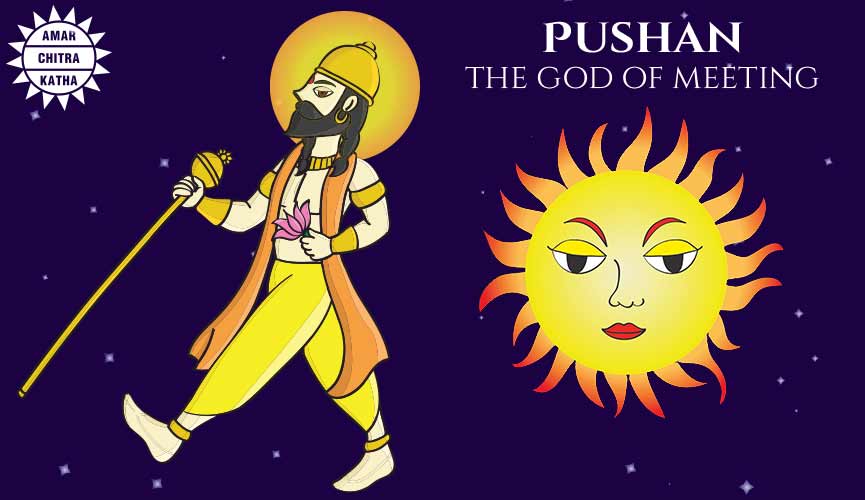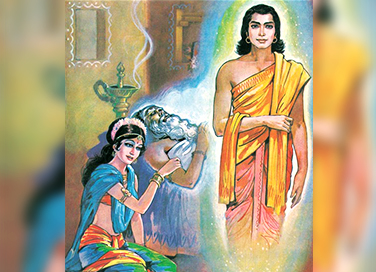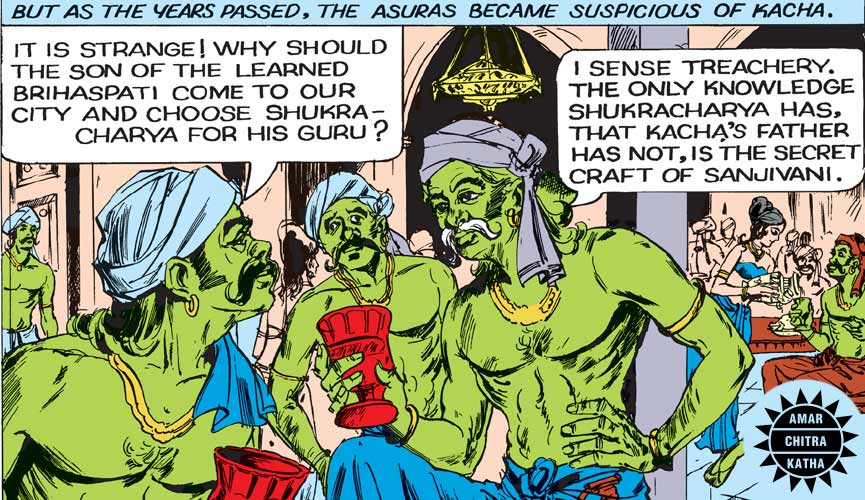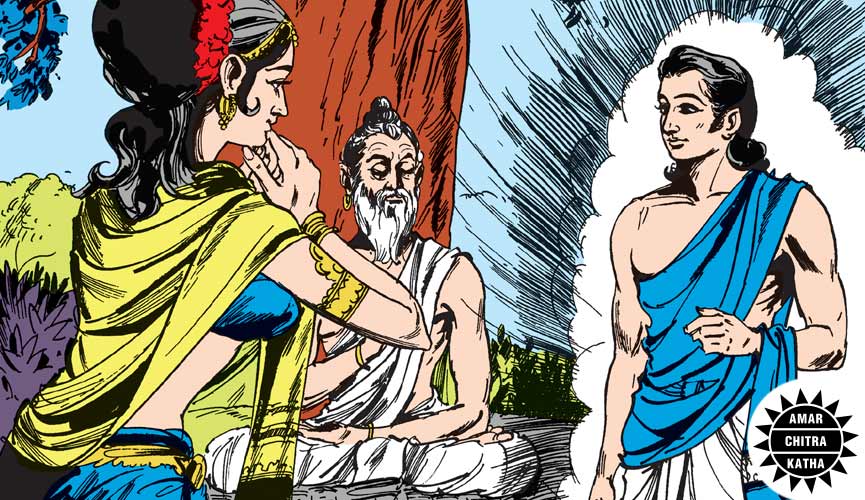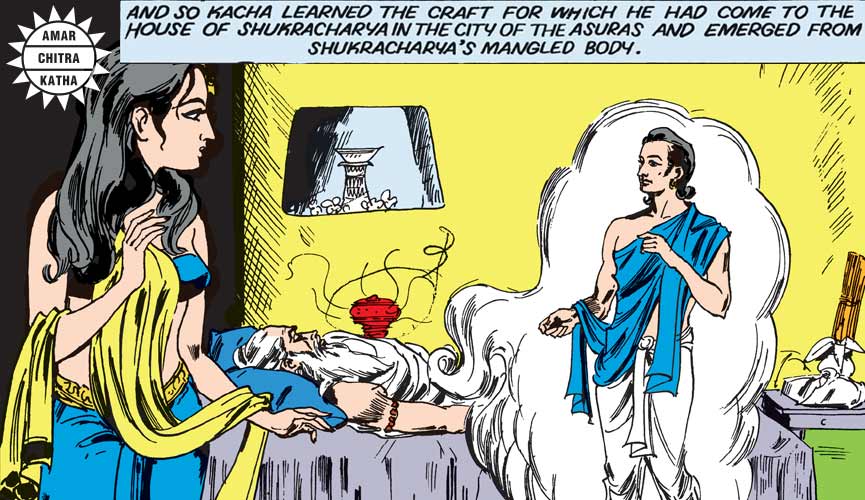By Mansee Jain
Kama, the god of love, once distracted Shiva during his meditation. Enraged by this, Shiva opened his third eye and burnt him to ashes, much to the horror of Kama’s wife, Rati. The distraught Rati lit a pyre and was about to enter it when a heavenly proclamation stopped her. It told her that her husband was still alive and she would be reunited with him on the day of Shiva’s marriage. If she wished to meet him, she was to seek work in the kitchen of the asura, Shambara. Rati disguised herself as a maid and called herself Mayavati. The head cook of Shambara’s palace kitchen accepted her and she began to work there.
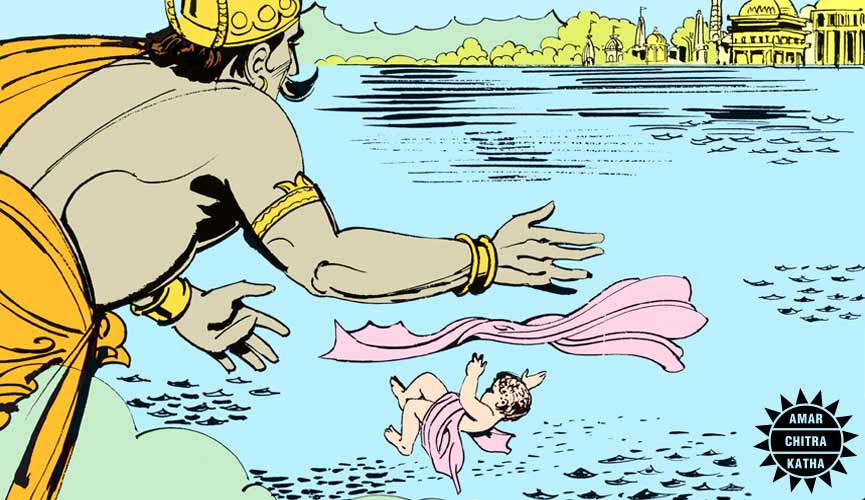
Meanwhile, Dwaraka was celebrating the birth of Krishna and Rukmini’s son, Pradyumna. He was the reincarnation of Kama. A week after Pradyumna’s birth, Shambara had a dream. Through this dream, he came to know that he would meet his end at the hands of Pradyumna. Unperturbed, Shambara decided to kill Pradyumna before he was old enough to be a threat. He made himself invisible and flew to Krishna’s palace in Dwarka. There, Shambara stole baby Pradyumna from his sleeping mother’s side and flew with him to the ocean. He then threw Pradyumna into the ocean and presumed that the threat was over.
However, unknown to Shambara, Pradyumna did not die but was instead swallowed by a large fish. By a turn of events, the fish was caught and ended up in the kitchen at Shambara’s palace! On cutting the fish, the cooks found baby Pradyumna and entrusted him into Mayavati’s care.
A befuddled Mayavati wondered about the child’s parents when the sage, Narada, appeared before her. He explained to her that the baby was none other than her husband, Kama. On being burnt, Kama had begged to be reborn as Krishna’s son. Narada also told Mayavati that Pradyumna, the son of Krishna and Rukmini, was fated to end the wicked Shambara’s life. He also detailed how Shambara, wanting to prevent this, threw baby Pradyumna into the ocean, which resulted in the baby being swallowed by a large fish and ending up in Shambara’s kitchen. After instructing her to raise Pradyumna with care and revealing to him his identity when he came of age, Narada disappeared.
As he grew up, Pradyumna displayed his father Krishna’s traits, such as his love for butter and the look of injured innocence when caught red-handed. Soon, he grew into a handsome young man, favoured by all the young maids in the kitchen.
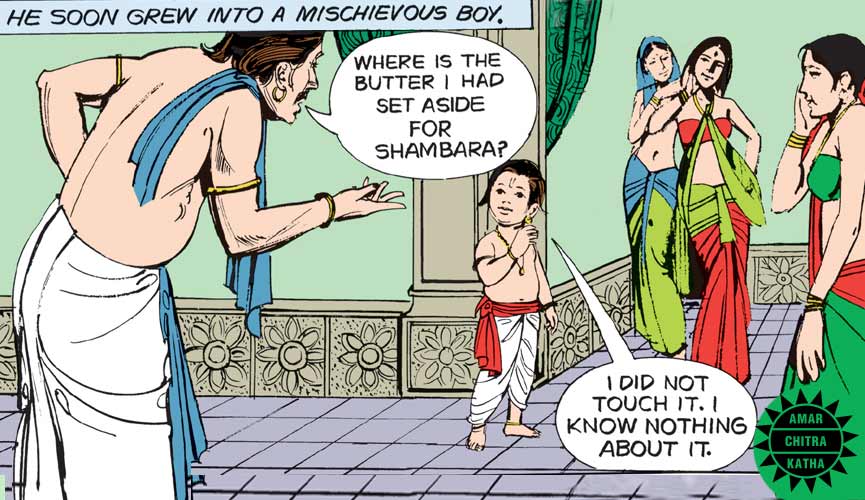
An anxious Mayavati decided that it was time for Pradyumna to learn the truth. She revealed to him his lineage and the events that had occurred after his birth. She also told him how his mother still believed him to be dead and wept for him. On hearing this, Pradyumna flew into a rage and determined to kill Shambara. Rati calmed him down and told him that he would have to learn spells to counter Shambara’s magical powers before engaging him in combat. She then began to teach him the skills that he would require to defeat Shambara, including a spell to counter the invisibility magic possessed by Shambara. Once Pradyumna was ready, Rati used her magical powers to arm him with the resources necessary to defeat the asura.
Pradyumna then reached Shambara’s palace gates and loudly taunt him about how Shambara had taken him from his mother’s side and thrown him into the ocean. An enraged Shambara, wondering who could have disclosed his secret, rushed out of his palace. A mighty battle ensued between Shambara and Pradyumna. Finally, resorting to magic, Shambara turned invisible. Pradyumna immediately cast the spell taught by Mayavati to break Shambara’s invisibility. He then cut off the asura’s head with his sword and returned to Mayavati to give her the news of his success. Mayavati then took Pradyumna and flew with him to Dwarka.
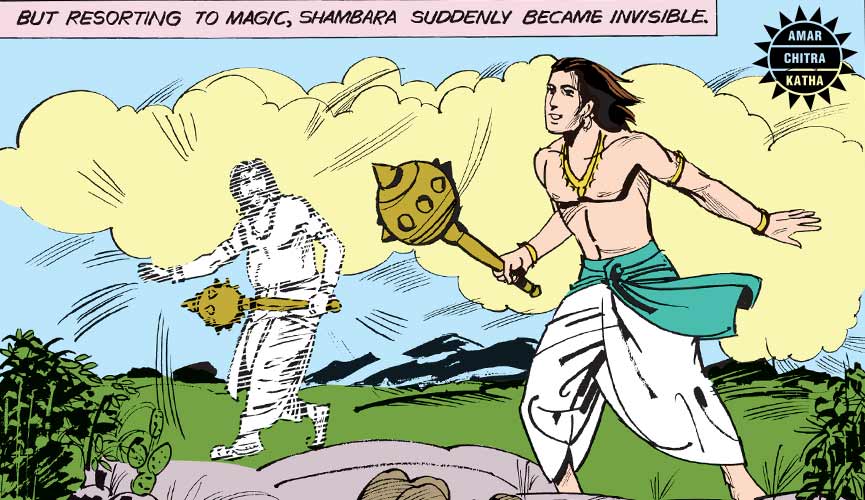
Meanwhile, Shiva was getting married to Parvati. Once the ceremony ended, the gods went up to him and begged him to restore Kama to Mayavati. Shiva immediately agreed since he too was now a slave of Kama or love.
At that moment, Mayavati and Pradyumna entered the inner sanctum of Krishna’s palace in Dwarka. All the ladies assumed that Pradyumna was Krishna and wondered who the beautiful woman with him was. On the other hand, Rukmini, who knew that this youth was not Krishna, wondered who he was and wished for him to be her son, Pradyumna. Before she could question him, Narada and Krishna entered. Narada proclaimed that her son had finally returned to her and revealed the true identities of both Pradyumna and Mayavati. A surprised Pradyumna embraced his wife and the couple took the blessings of Krishna, Rukmini and Narada. On hearing that their long-lost prince had returned with a wife, all of Dwaraka celebrated this momentous occasion.
Read the story of Kama in our title ‘Pradyumna‘ available on the ACK Comics app, Kindle, Amazon, Flipkart, and other major e-tailers.




